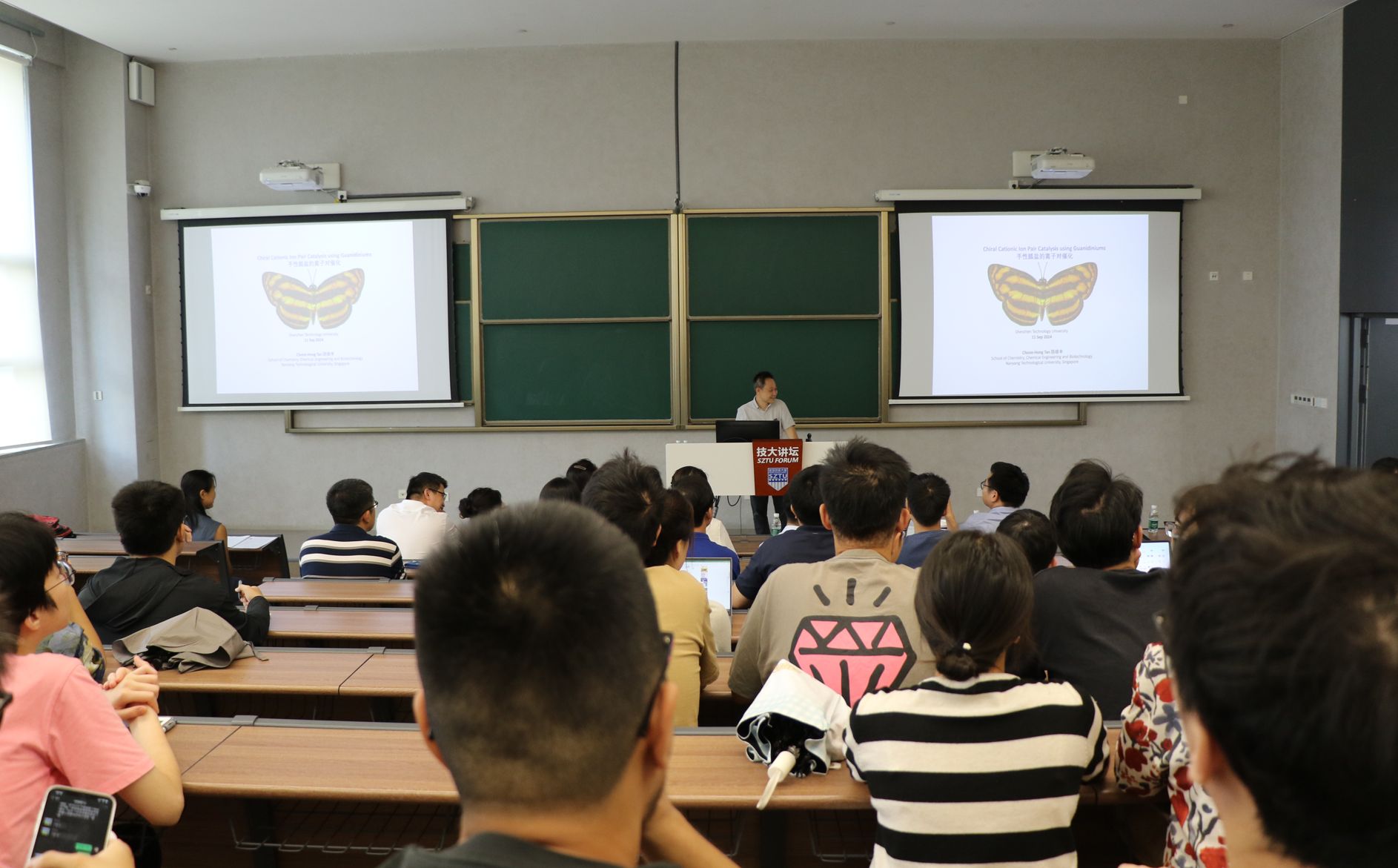
主题:Chiral Cationic Ion Pair Catalysis using Guanidiniums手性胍盐的离子对催化
主讲人:TAN, Choon Hong (陈俊丰)
时间:2024年9月11日(周三)10:30 -11:30
地点:深圳技术大学C-5教学楼104阶梯教室
主讲人简介:
Prof. Tan received his BSc (Hons), First Class from the National University of Singapore in 1995 and completed his PhD from the University of Cambridge in 1999. Following that, he carried out two years postdoctoral training at the Department of Chemistry and Chemical Biology, Harvard University. Subsequently, he worked as a Research Associate at Department of Biological Chemistry and Molecular Pharmacology, Harvard Medical School for another year before joined the Department of Chemistry, National University of Singapore as Assistant Professor in 2003. He was then promoted to Associate Professor in 2010. He joined Nanyang Technological University in 2012 as an Associate Professor and was promoted to Full Professor in 2016. His research interest is in the field of Synthetic Organic Chemistry and Catalysis.Professor Tan is the immediate past President of Singapore National Institute of Chemistry and current Vice-President of the Singapore National Academy of Science. He is recently named the recipient of the 2023 Ta-Shue Chou Lectureship Award.
报告摘要:
Chiral cations have found useful applications as phase transfer catalyst i.e. in partnership with inorganic basic salts such as hydroxides and carbonates for basic reactions. We have over the past decade developed several chiral cation catalysts including pentanidium and bis-guanidinium. Herein, we report three topics related to these chiral cation catalysts. Firstly, we will discuss the role of these catalysts in ion pair catalysis. We will discuss reactions in which they are partnered with polyoxometalates such as tungstate and molybdate. We will also discuss reaction involving hypervalent silicate intermediates. In the second topic, we will discuss how we use these catalysts are used to investigate roles of halogen bonding in catalysis. Lastly, we will explain the desymmetrisation of sulfinate, which provide a route to a range of enantio-enriched sulfur stereogenic centers.